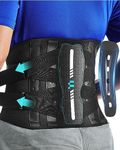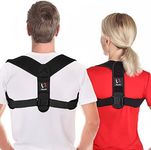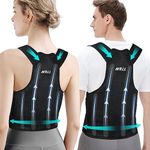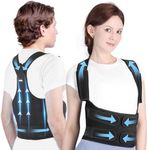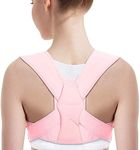Buying Guide for the Best Posture Braces
When choosing a posture brace, it's important to consider your specific needs and the level of support you require. Posture braces are designed to help correct your posture by aligning your spine and shoulders, which can alleviate pain and prevent further issues. The right posture brace should be comfortable, adjustable, and suitable for your daily activities. Understanding the key specifications will help you make an informed decision that best suits your lifestyle and posture correction needs.MaterialThe material of a posture brace is crucial for comfort and durability. Common materials include neoprene, cotton, and elastic blends. Neoprene is durable and provides good support, but it can be less breathable. Cotton is softer and more breathable, making it comfortable for long-term wear, but it may not offer as much support. Elastic blends provide flexibility and a snug fit. Consider your skin sensitivity and the climate you live in when choosing the material. If you plan to wear the brace for extended periods, opt for a breathable and comfortable material.
AdjustabilityAdjustability refers to how well you can customize the fit of the posture brace to your body. Most braces come with adjustable straps or Velcro closures that allow you to tighten or loosen the fit. This is important because a well-fitted brace will provide better support and be more comfortable to wear. If you have a unique body shape or size, look for a brace with multiple adjustment points. For those who plan to use the brace during various activities, having a highly adjustable brace can ensure it remains effective and comfortable.
Support LevelThe support level of a posture brace indicates how much correction and stabilization it provides. Light support braces are suitable for minor posture issues and can be worn discreetly under clothing. Medium support braces offer more correction and are ideal for moderate posture problems or for use during physical activities. High support braces provide maximum correction and are often bulkier, making them suitable for severe posture issues or recovery from an injury. Assess your posture needs and choose a support level that aligns with the severity of your posture issues.
SizeSize is a critical factor in ensuring the effectiveness of a posture brace. A brace that is too small may be uncomfortable and restrict movement, while one that is too large may not provide adequate support. Most manufacturers provide sizing charts based on measurements of your chest, waist, or shoulders. It's important to measure yourself accurately and refer to these charts to find the right size. If you're between sizes, consider the adjustability of the brace to determine which size might offer the best fit.
DesignThe design of a posture brace can affect both its functionality and comfort. Some braces are designed to be worn over clothing, while others are discreet enough to be worn underneath. There are also different styles, such as full back braces or those that focus on the upper back and shoulders. Consider when and where you plan to wear the brace. If you need it for work or social settings, a discreet design might be preferable. For home use or during exercise, a more robust design might be suitable.



